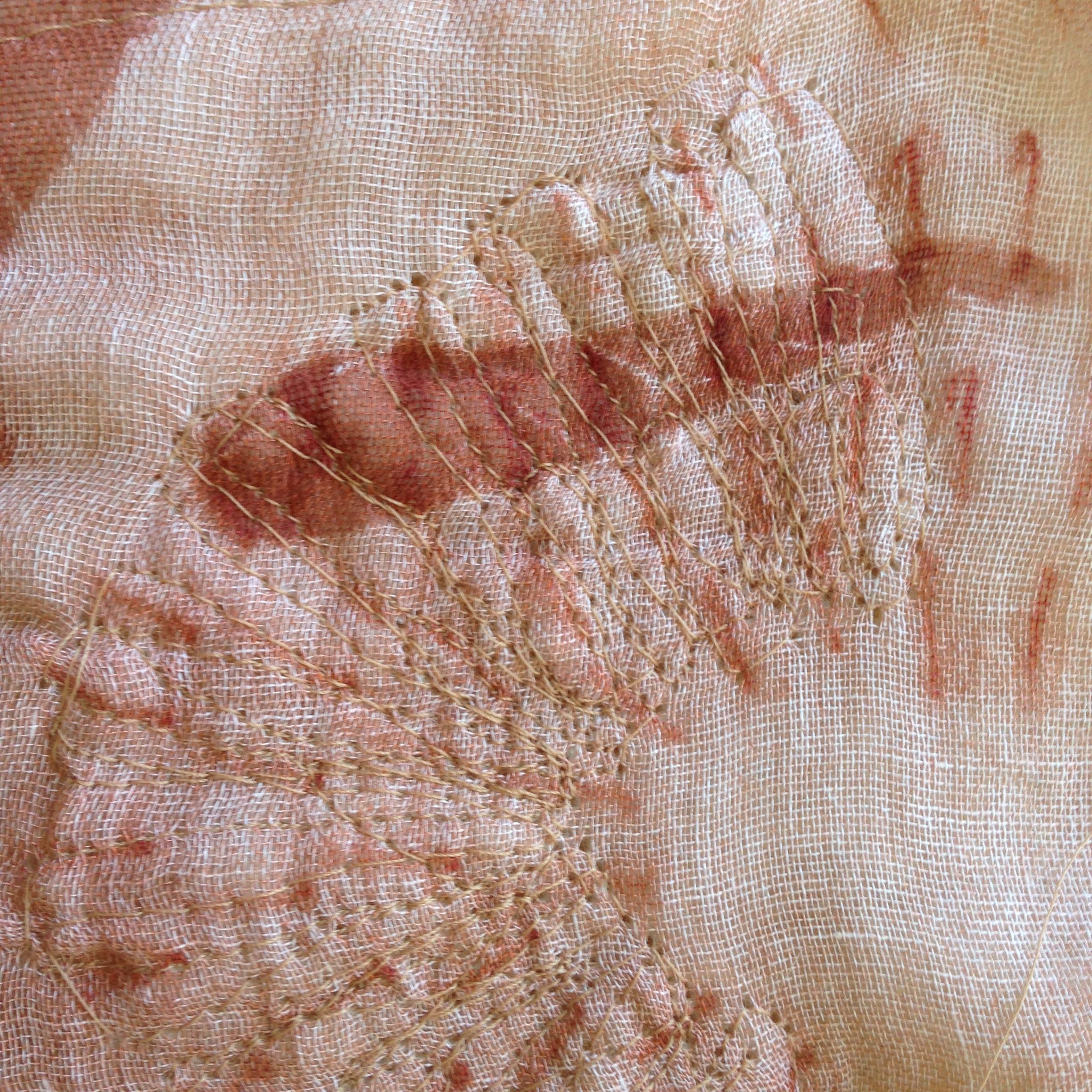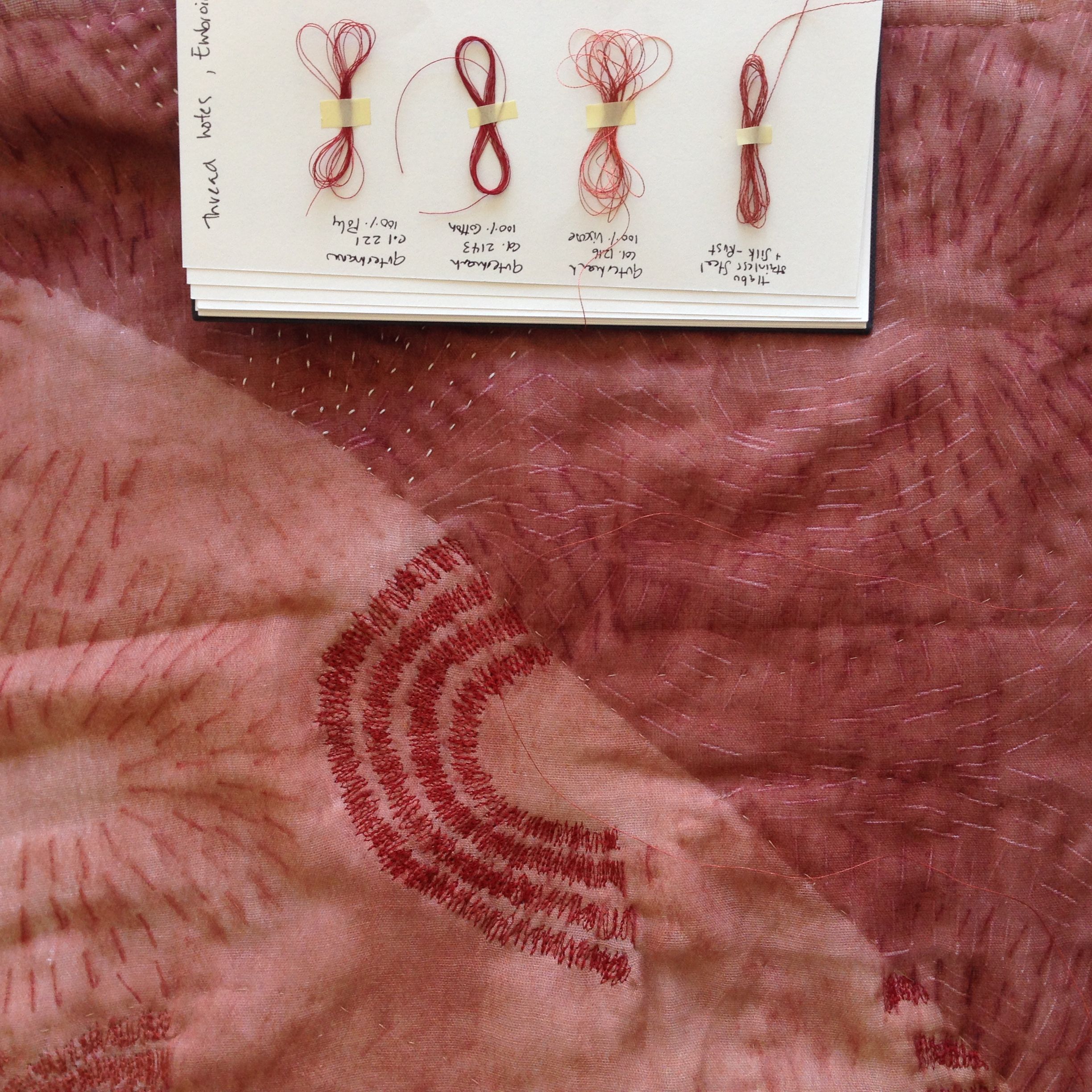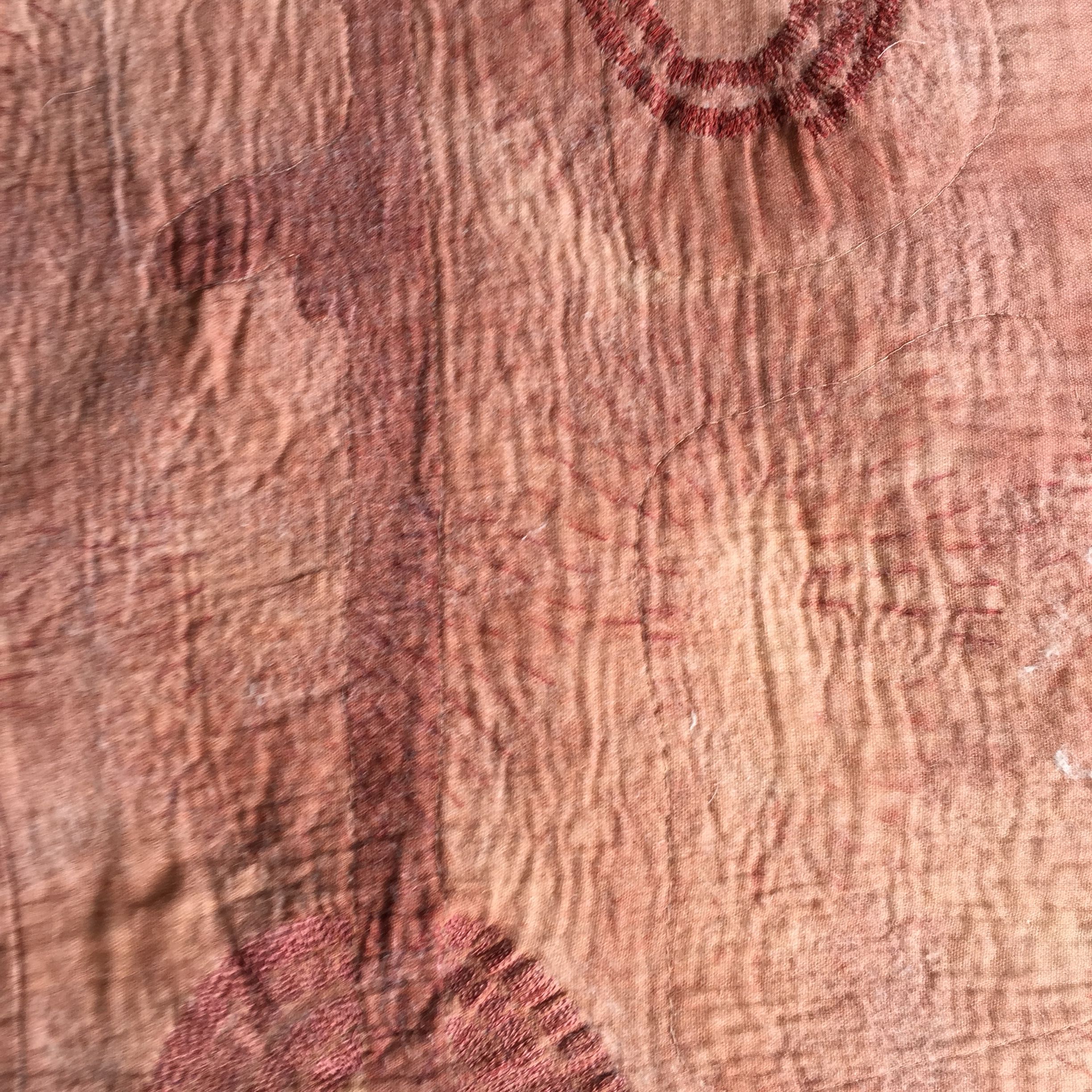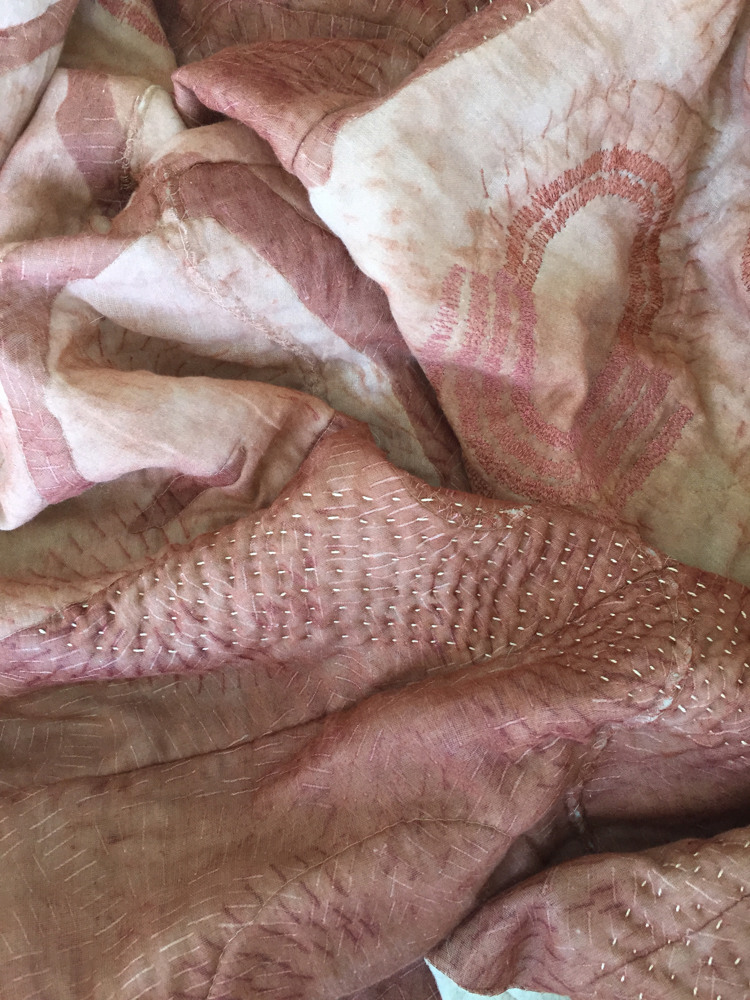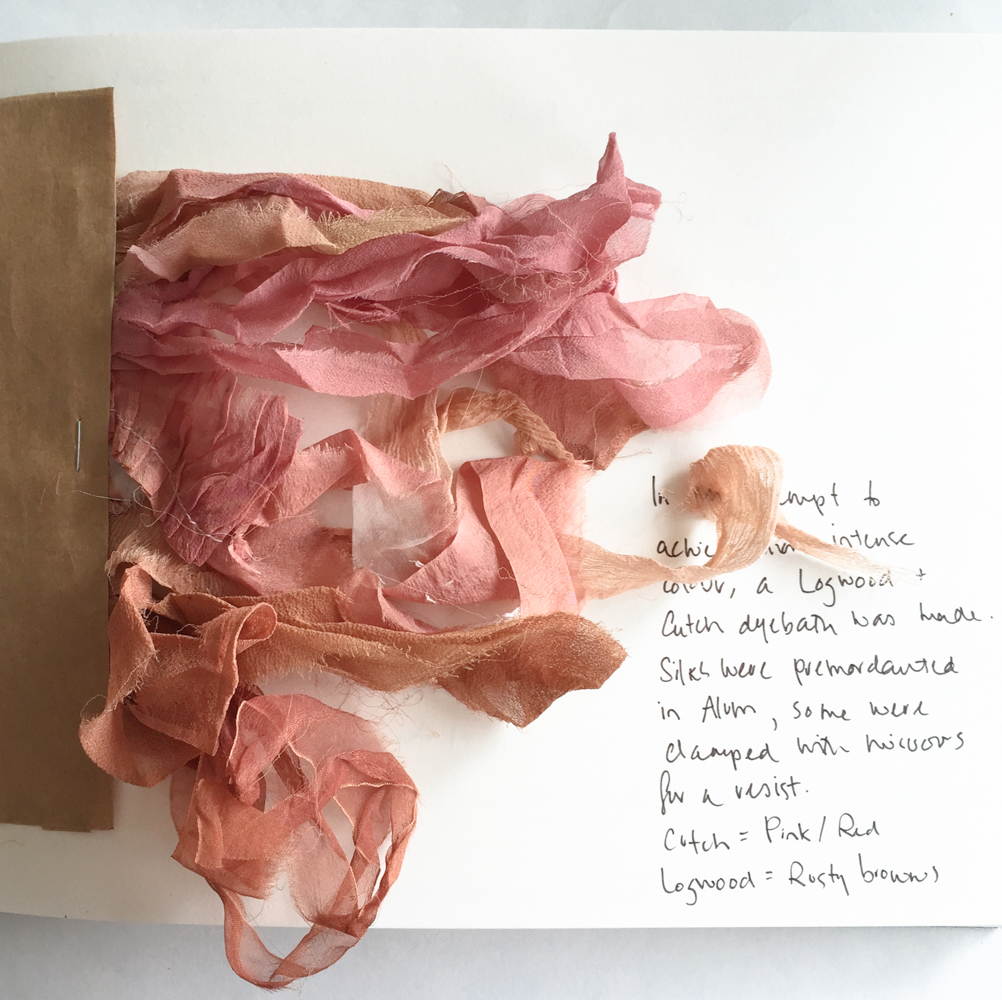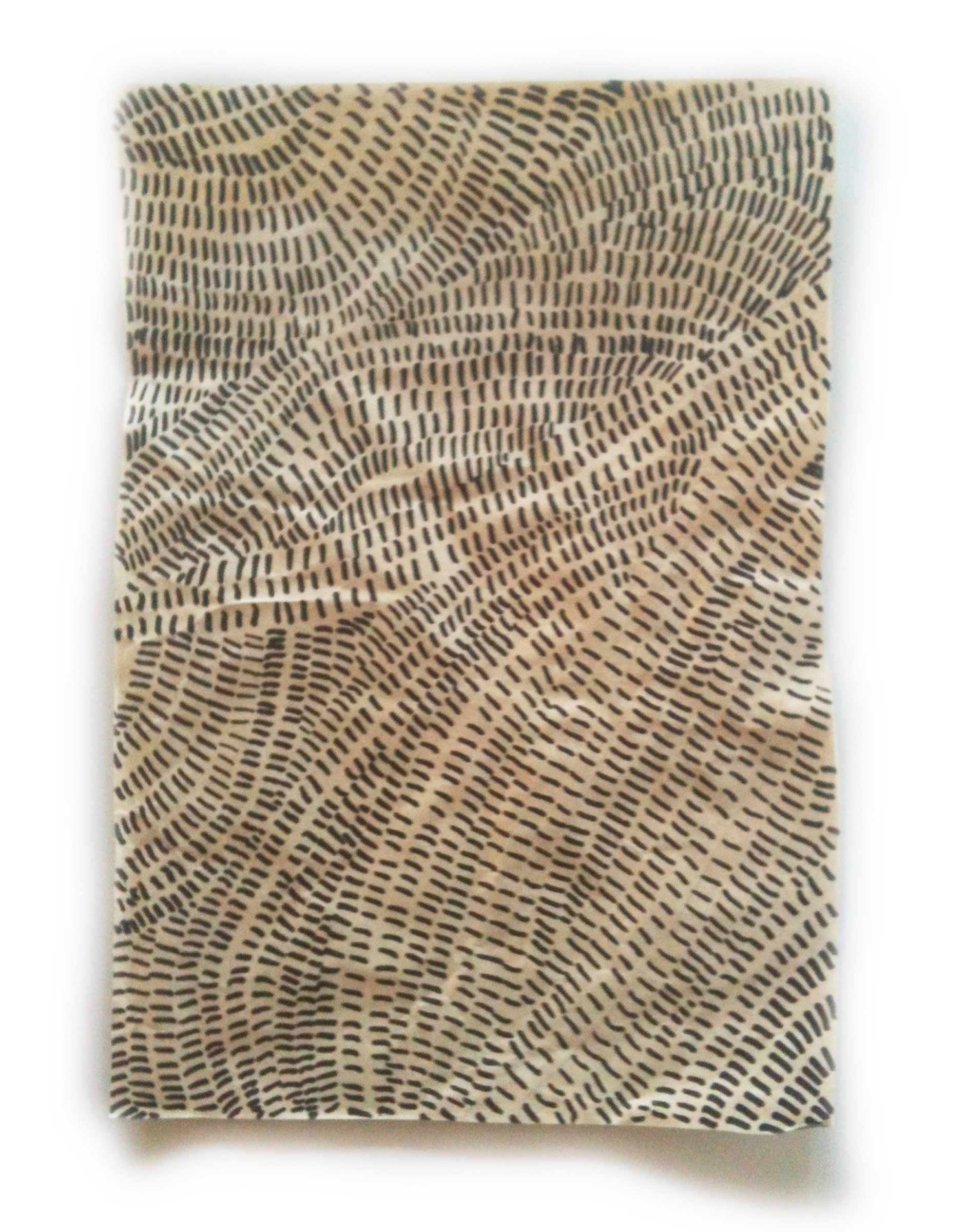Layering Time: From Felting to Digital Print
Topology of Memory incorporates a multitude of textile techniques, layered and merged. It’s almost a timeline of the history of textiles, beginning with felting, which is said to be the oldest process of making fabric, to direct digital printing, one of the newest.
The process of felting falls under the category of ‘non-wovens’, as apposed to woven or knitted cloth. I was introduced to it in my third year of university when a guest teacher, who I sadly can’t remember who that was, introduced the process. The rubbing and rolling of wool, and starting from a raw fiber resonated with me and ten years later, I’m still discovering it’s potential.
The basic principle behind felting is natural fiber’s propensity to bind if agitated in certain circumstances. This results in a strengthening and shrinking process. It turns out, I’m very good at shrinking fabric - intentionally and unintentionally… but that story is yet to come.
This binding can also mean you can integrate other natural fibers into the wool. Particularly woven or knitted fabric that is light weight and has an “open-weave”. If it’s natural (cotton, silk etc) and you can see light through it, it will generally bind into the wool successfully. I’m not sure of the history of this process, but I know in Australia it is called “nuno-felting” while Americans call it “laminate-felting”.
This is where the digital print comes into the fold. I thought if I could choose a very light, natural fabric, I could print an image onto it via the technology. In Sydney we have some great studios that specialise in digital printing onto fabric. Many will send out sample books so you can see all the fabrics they offer.
The image I chose to print derived from my ‘map-making’ under the clothesline, which I then transposed over the top a pattern created with a stapling technique. The stapling technique, of course, came from another strong childhood memory… a story I will share with you next week.

